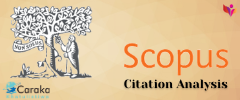Effect of STEM-based Learning on the Cognitive Skills Improvement
Abstract
The success in the modern era is determined by how students strive to have certain skills. This can be achieved by students through the development of cognitive domain, because it is considered as the ability to master subject matter with regard to thinking ability in addition to learning. Hence, this research aims at improving the learning outcomes in the cognitive domain of students at the primary school level. This research was conducted using the Pre-Experiment method with the pretest-posttest One-Group design. The lessons were implemented using Science, Technology, Engineering, and Mathematics (STEM)-based learning, while the learning method was referred to the Engineering Design Process. The stages consist of problem scoping, idea generation, design and construct, design evaluation and re-design. The research involved 30 fourth grade primary school students in Cimahi City as the research samples. The data were collected using observation and analyzed using quantitative descriptive analysis. The research results revealed that there were differences in learning outcomes in the cognitive domain. To conclude, STEM-based learning could improve primary school students' cognitive skills.
Keywords
Full Text:
PDFReferences
Barrett, B. S., Moran, A. L., & Woods, J. E. (2014). Meteorology meets engineering: an interdisciplinary STEM module for middle and early secondary school students. International Journal of STEM Education, 1(1), 1–7. https://doi.org/10.1186/2196-7822-1-6
Bloom, B. S. (1956). Taxonomy of Educational Objectices Book 1: Cognitive Domain. Longman: London.
Bybee, R. W., & Fuchs, B. (2006). Preparing the 21st century workforce: A new reform in science and technology education. Journal of Research in Science Teaching, 43(4), 349–352. https://doi.org/10.1002/tea.20147
Ejiwale, J. A. (2013). Barriers to Successful Implementation of PDM. Journal of Education and Learning, 7(2), 63–74. https://doi.org/10.1007/978-3-319-24436-5_20
English, L. D., & King, D. T. (2015). STEM learning through engineering design: fourth-grade students’ investigations in aerospace. International Journal of STEM Education, 2(1). https://doi.org/10.1186/s40594-015-0027-7
Figliano, F., Wells, J. G., Mark Sanders, C. E., Wilkins, J. L., & Fred
Figliano, B. (2007). Strategies For Integrating STEM Content: A Pilot Case Study.
Firdaus, A. R. (2015). Penerapan Metode Eksperimen untuk Meningkatkan Hasil Belajar Siswa pada Materi Energi. 6th Pedagogy International Seminar 2015, 1–412. Retrieved from http://jurnal.upi.edu/proceedingpgsd/view/3699/penerapan-metode-eksperimen-untuk-meningkatkan-hasil-belajar-siswa-pada-materi-energi.html
Hanover. (2011). K-12 STEM Education Overview.
Hurley, M. M. (2001). Reviewing Integrated Science and Mathematics: The Search for Evidence and Definitions From New Perspectives. School Science and Mathematics, 101(5), 259–268. https://doi.org/10.1111/j.1949-8594.2001.tb18028.x
KEMENDIKBUD. (2016). Peringkat dan Capaian PISA Indonesia Mengalami Peningkatan. Retrieved from https://www.kemdikbud.go.id/main/blog/2016/12/peringkat-dan-capaian-pisa-indonesia-mengalami-peningkatan
Morrison, J. S. (2006). Attributes of STEM education: the students, the academy, the classroom. TIES STEM barrEducation Monograph Series. https://doi.org/10.1016/j.anl.2012.01.011
Osman, K., & Saat, R. M. (2014). Editorial. Science technology, engineering and mathematics (STEM) education in Malaysia. Eurasia Journal of Mathematics, Science and Technology Education, 10(3), 153–154. https://doi.org/10.12973/eurasia.2014.1077a
Rahayu, G. D. S., & Nugraha, F. F. (2018). Effect of Cooperative Learning Model Type Team Game Tournament (TGT) on Cross-Cultural Skills in Learning Science Social Knowledge in Primary School. Journal of Elementary Education, 2(1), 63–70.
Rotherham, A. J., & Willingham, D. (2009). 21st Century Skills: The Challenges Ahead. Educational Leadership, 67(1), 16–21. Retrieved from http://www.ascd.org/publications/educational-leadership/sept09/vol67/num01/21st-Century-Skills@-The-Challenges-Ahead.aspx
Saavedra, A. R., Corporation, T. R., Opfer, V. D., Corporation, T. R., Jackson, T., Kehayes, J., … Perkins, D. (2012). 21.Century Skills. (April), 1–35.
Sanders, B. M. (2009). STEMmania. 20–27.
Schnittka, C., & Bell, R. (2011). Engineering design and conceptual change in science: Addressing thermal energy and heat transfer in eighth grade. International Journal of Science Education, 33(13), 1861–1887. https://doi.org/10.1080/09500693.2010.529177
Silva, E. (2009). Measuring Skills for 21st-Century Learning. PHI DELTA KAPPAN, 90(9), 630–634. https://doi.org/https://doi.org/10.1177/003172170909000905
Tikhonova, E., & Kudinova, N. (2017). Sophisticated Thinking: Lower Order Thinking Skills. 2nd International Multidisciplinary Scientific Conference on Social Sciences and Arts SGEM2015, 2(August). https://doi.org/10.5593/sgemsocial2015/b12/s3.117
Tsupros, N., Kohler, R., & Hallinen, J. (2009). STEM Education in Southwestern Pennsylvania the missing components. Retrieved from https://www.cmu.edu/gelfand/documents/stem-survey-report-cmu-iu1.pdf
DOI: https://doi.org/10.53400/mimbar-sd.v6i2.17562
Refbacks
- There are currently no refbacks.
Copyright (c) 2019 Mimbar Sekolah Dasar

This work is licensed under a Creative Commons Attribution-ShareAlike 4.0 International License.
View Mimbar Sekolah Dasar Stats



.png)
